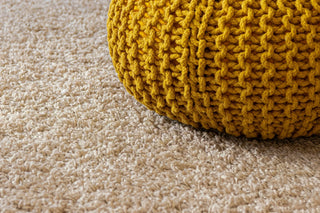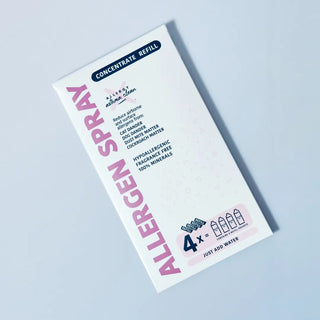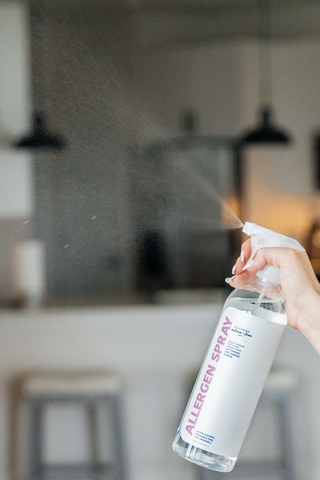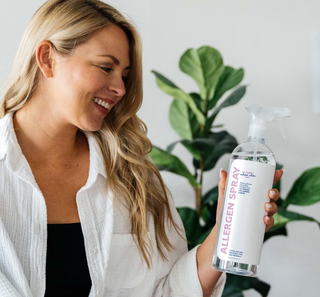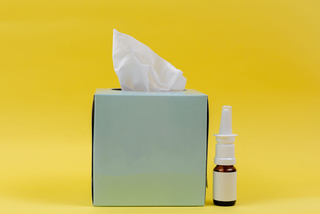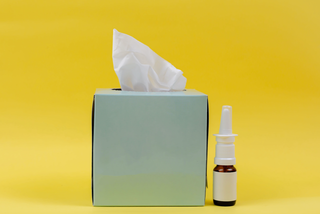Experiencing symptoms like headaches, dizziness, or respiratory difficulties after getting new carpet? These are common reactions to volatile organic compounds (VOCs) emitted during the off-gassing process. Immediate symptoms can include nausea, shortness of breath, and asthmatic reactions. In addition to respiratory problems, individuals may also suffer from skin reactions and eye irritation.
Understanding these symptoms and their causes helps in taking timely action to improve indoor air quality and reduce health risks.
This article explains these symptoms and provides guidance on how to reduce the danger.
Key Takeaways
-
Carpet off-gassing releases harmful VOCs such as formaldehyde and benzene, impacting indoor air quality and your health.
-
Common symptoms of carpet off-gassing include headaches, respiratory issues, skin reactions, and eye irritation.
-
Reducing carpet off-gassing involves selecting low-VOC carpets and padding. Make sure you have adequate ventilation. Consider various flooring options, such as cork, tile, wood, or linoleum, for enhanced air quality.
Understanding Carpet Off-Gassing
Carpet off-gassing refers to the release of VOCs from materials used in carpet installation, such as adhesives and latex backing. These VOCs include:
-
Formaldehyde
-
Benzene
-
Styrene
These compounds are common culprits that can be found in new carpets and padding, and they can persist for years. The most significant emissions occur in the first few months after installation, making them a major source of off-gassing.
The presence of VOCs in new carpets has a significant impact on indoor air quality. As these compounds off-gas, they contribute to indoor air pollution, which can adversely affect your health. Recognizing the impacts of these toxic fumes is vital for maintaining a healthy indoor environment.
From the moment a new carpet is installed, the off-gassing process begins, creating the familiar “new carpet smell” -an odor that many mistakenly associate with cleanliness, much like that enticing new car smell. However, this smell is a red flag indicating the presence of harmful VOCs. Easing the effects of carpet off-gassing is necessary to safeguard your lungs, health, and well-being.
Common Symptoms of Carpet Off-Gassing
Respiratory Issues
Inhalation of VOCs from new carpets can lead to conditions such as coughing, wheezing, and shortness of breath. These symptoms are signs of respiratory tract irritation, often worsened by inadequate ventilation or poor indoor air quality.
Addressing respiratory symptoms linked to carpet off-gassing is crucial. Using air purifiers with HEPA filters and ensuring proper ventilation can significantly improve indoor air quality, reducing the impact of these harmful chemicals on your respiratory system. High-efficiency particulate air filters for your HVAC can also enhance your air quality.
Skin Reactions
Skin reactions such as rashes, itching, or inflammation of the skin are common issues associated with direct exposure to new carpet materials. These reactions are often the result of chemicals released from carpet fibers and glue.
Being aware of these skin reactions helps manage symptoms and ensure a healthier you. Individuals with heightened sensitivity or chemical sensitivities should be particularly cautious when installing new carpeting or handling synthetic carpets.
Eye Irritation
Carpet off-gassing can lead to eye discomfort, including symptoms such as redness, itching, and conjunctivitis. These symptoms are often a result of exposure to VOCs present in new carpets.
Headaches and Dizziness
Feeling dizzy or experiencing headaches can be a direct reaction to VOCs present in new carpets. These chemicals can affect the brain’s functioning, leading to headaches and a feeling of fatigue.
Continuous exposure to VOCs may compound these effects, causing prolonged periods of discomfort and dizziness. Early recognition of these symptoms and reducing your VOCs exposure can help ease these adverse effects.
Health Risks Associated with Long-Term Exposure
Prolonged exposure to VOCs can lead to a range of health issues affecting various organs and systems. Over time, individuals may experience impaired liver and kidney function, as well as potential damage to the central nervous system. Certain VOCs have been identified as potential carcinogens, raising significant health concerns for chronic exposure. Awareness and reducing your risk associated with long-term exposure to the most harmful VOCs are urgent.
Young children and pets are particularly vulnerable to health issues caused by carpet off-gassing, given their closer proximity to the floor and higher sensitivity to toxins. Additionally, individuals with pre-existing conditions like asthma may experience heightened sensitivity, heightening their symptoms and health risks.
Recognizing these risks underscores the need for proactive measures to reduce VOC exposure from carpets and other household sources that emit VOCs. By doing so, you can protect your health and the health of your loved ones.
Factors Influencing Symptom Severity
The severity of symptoms from carpet off-gassing can vary dramatically among individuals. Factors such as age, pre-existing health conditions, and overall indoor air quality play a significant role.
Excessive moisture in carpeted areas can lead to mold spores and mold growth, worsening off-gassing symptoms.
Easing Carpet Off-Gassing Effects
Minimizing the effects of carpet off-gassing is key for better indoor air quality and reducing health risks. One effective strategy is choosing carpets with low VOC emissions. Proper ventilation, like opening windows and using fans, helps lower VOC levels in indoor spaces.
Use non-toxic cleaning products. Manage humidity and temperature levels in your home to reduce the rate of off-gassing, as higher temperatures and humidity can increase VOC emissions.
Choose Low-VOC Carpets
Low-VOC carpets can reduce allergic reactions and improve overall health. Look for carpets certified with labels such as Green Label Plus to ensure low VOC emissions.
It's not just the carpet that is a cause of concern. You also need to consider the carpet padding. Padding can also contribute to VOCs in your home.
To minimize VOC absorption, avoid painting or undertaking other work immediately before installing a new carpet. You can use low-VOC paint if you must paint before installing new carpet.
Consider the carpet padding. These can also add to the VOCs in your house, it's not just carpeting.
Ensure Proper Ventilation
Ventilation is essential after new carpet is installed to dissipate chemical odors or VOCs. Proper ventilation is crucial for reducing VOC concentrations in indoor air.
Increase ventilation by opening windows and using fans to reduce the concentration of VOCs in indoor air after installing new carpet. Opening windows on opposite sides of a room to create a draft can significantly enhance ventilation and provide a flow of fresh air.
Alternative Flooring Options
Low-VOC laminate flooring is often made from sustainable materials and is designed to reduce harmful emissions. Vinyl flooring has improved significantly, with many products now being FloorScore certified to guarantee lower VOC levels.
Ceramic and porcelain tiles are considered some of the safest flooring options due to their low VOC emissions when properly manufactured. Selecting flooring materials that emit fewer VOCs is crucial for maintaining indoor air quality. Also, look at the adhesive used to install tile. There are safe alternatives available.
Summary
By choosing low-VOC carpets, ensuring proper ventilation, and considering alternative flooring options, you can significantly improve indoor air quality and reduce the health risks associated with toxic fumes. Taking these steps not only enhances your well-being but also creates a safer, more comfortable home for everyone.
Frequently Asked Questions
What are the common symptoms of carpet off-gassing?
Carpet off-gassing can lead to symptoms such as headaches, dizziness, respiratory issues, skin reactions, and eye irritation. If you experience any of these, consider improving ventilation in your home.
How long can new carpets emit VOCs?
New carpets can emit VOCs for up to five years, with the highest levels released during the initial months after installation. It's advisable to ensure good ventilation during this period to minimize exposure.
What are some long-term health risks associated with carpet off-gassing?
Long-term health risks associated with carpet off-gassing include impaired liver and kidney function, potential damage to the central nervous system, and an increased risk of cancer. It is essential to consider these risks when selecting flooring materials.
How can I lessen the effects of carpet off-gassing?
To effectively lessen the effects of carpet off-gassing, opt for low-VOC carpets or other flooring materials, ensure proper ventilation in your home, and use non-toxic cleaning products. These steps will significantly reduce harmful emissions and improve indoor air quality.
What are some alternative flooring options to avoid carpet off-gassing?
To avoid carpet off-gassing, consider using low-VOC laminate, vinyl flooring, engineered hardwood, bamboo flooring, or ceramic and porcelain tiles. Note: it's not just the flooring material but the adhesives used to install the material. These options provide a healthier indoor environment while maintaining aesthetic appeal.

